
 |
Home | Tibet Buddhism Main | Contact |
Updated: February 2009
My rating scale:
 Excellent ;
Excellent ;
 Very Good ;
Very Good ;
 Good ;
Good ;
 Fair ;
Fair ;
 Poor.
Poor.
Click on an image to see the FULL size with a caption.
I've enjoyed reading many books on Buddhism over the years. I especially like Thich Nhat Hanh for his very simple explanations of very complex topics, Robert Thurman for trying to explain very esoteric, very difficult Tibetan Tantric Buddhism, and of course His Holiness The Dalai Lama. Here are my favourite books.
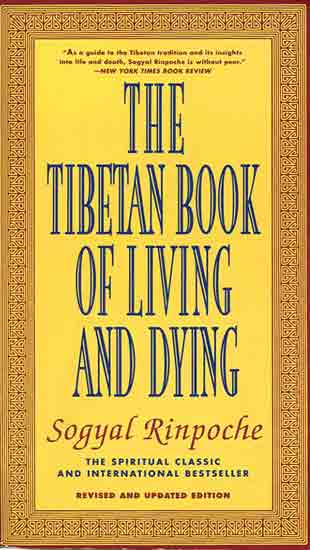

by Sogyul Rinpoche. Using anecdotes and stories and the inspiration of Tibetan Buddhism, Sogyul writes a manual for life and death, providing a clear and inspiring introduction to the practice of meditation, to the nature of mind, to karma and rebirth, and to compassionate love and care for the dying, and ultimately how to face our own death. Focusing on death will lead to a much richer life.
One of the few books I have read many times, it provides understanding and approaches to dealing with the illness and death of loved ones. I found the writing style clear and understandable. I especially liked the step-by-step meditation exercises.
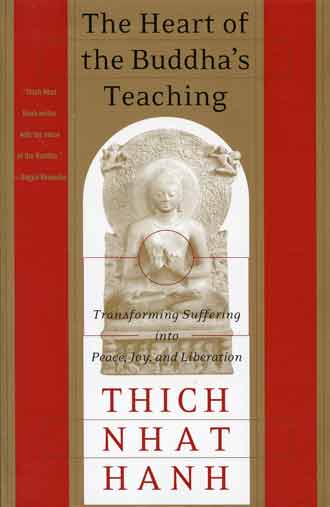

by Thich Naht Hanh. The Vietnamese Zen Buddhist monk uses his simple, straightforward explanations to explain the very core of Buddhism, presenting Buddhism as way of thinking and a well-traveled path toward enlightenment.
He begins with the Turning the Dharma Wheel Sutra, the classic tale of Buddha's awakening, and then proceeds through the basic core concepts of Buddhist terminology: Four Noble Truths, The Noble Eightfold Path, The Three Dharma Seals, The Three Doors of Liberation, The Twelve Links of Causation, The Three Jewels, The Six Harmonies, The Five Powers, The Five Wonderful Precepts and The Four Immeasurable Minds.
I found this book to be the most accessible and most complete introduction to Buddhism. Thich Nhat Hanh explains things in a simple, clear, and concise manner.
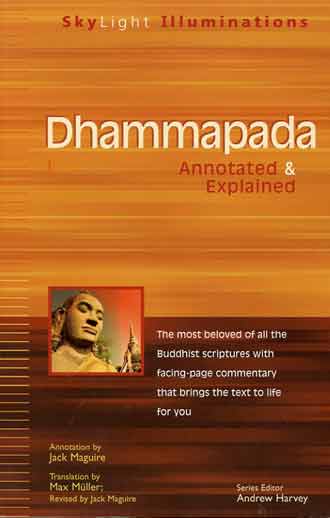
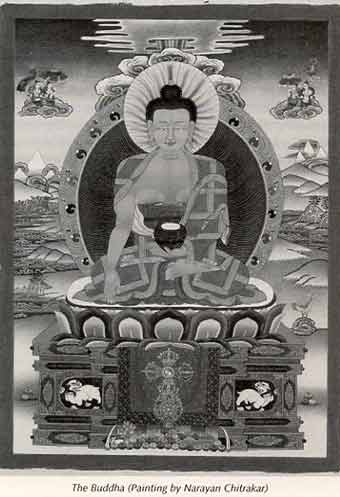

by Max Muller (Translator), Jack Maguire (Editor). Simple. Short. Profound. Kind of like Christ's Sermon On The Mount, the title of these 422 verses can be translated as "Path of the Buddha's Teachings." There are many books on the Dhammapada. I read this one because, eh, it was in stock at my local bookstore.
The text begins by describing the fundamental role of mental conditioning in making us who we are. It then paints contrasting portraits of three types or levels of existence: the fool, the wise one, and the enlightened one. It goes on to address specific aspects of experience, conduct, and belief that characterize an individual's transformation from one of these modes of being to another.
Here are a few of my favourite verses:
For never does hatred cease by hatred at any time. Hatred ceases by love. This is an eternal law.
Before long - alas! - the body will lie on the ground, bereft of consciousness and despised, like a useless rotten log.
Even as a lotus may grow from roadside garbage and spread joy to many traveling souls with its scent, so a true follower of the Buddha shines and brings light to multitudes of blind mortals.
Do not have evildoers or low people for friends. Have virtuous people for friends. Have for friends the best of people.



by Brad Warner, an early-80s hardcore punk musician who became a Zen monk. First published 2003. Warner devotes chapters to some common Zen notions such as the oneness of reality, reincarnation, and the importance of the present moment. By liberally sharing anecdotes from his own life as a down-and-out punk rocker and maker of monster movies, Warner constantly focuses on the importance of a direct experience of reality in all its rawness over adherence to any set of beliefs-even Zen ones.

by Brad Warner. Warner ambitiously presents something close to textual commentary on 13C Japanese Zen master Dogen's masterwork Shobogenzo teaching on anger, sex, loving-kindness, dependent arising and other familiar Buddhist themes.
I thoroughly enjoyed Warner's writing style - direct, funny, profane, challenging and a bit irreverent. I think his books will appeal to a whole generation of younger people who don't want to read the stuffy, esoteric Buddhist books.
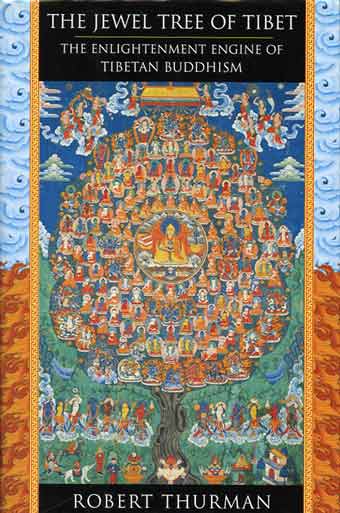

by Robert Thurman. Based on the Fourth Panchen Lama's text Mentor Devotion, Thurman uses Tibet's beautiful wish-fulfilling jewel-tree imagery to help the reader to generate bliss and enlightenment. The core of this book are the visualization exercises where you draw inspiration and compassion from a revered being and then extend their heartfelt loving kindness to others. Thurman says it's up to you who you perceive to be such a revered being. It could be the Buddha or the Dalai Lama, or Christ, Moses, your mother, etc. Thurman also discusses the history of Buddhism, its contrast to much of Western thought, and how the major tenants of Buddhism can work for people from the West.
"Through the great bliss state, I myself become the mentor deity. From my luminous body, Light rays shine all around, Massively blessing beings and things, Making the universe pure and fabulous, Perfection in its every quality."
I found this book to be deep and profound, but a little hard to understand in places. I especially lied the section where Thurman encourages us to meditate on the loving-kindness of our mothers.

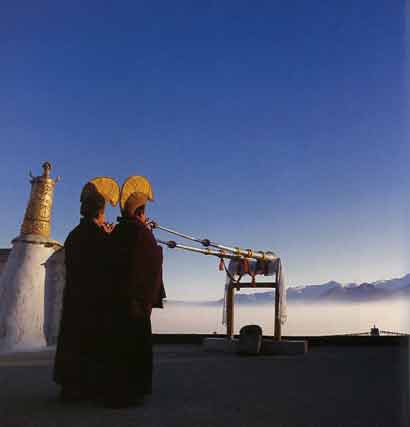

by His Holiness the Dalai Lama, photographs by Ian Cumming. This book brings together four previously published books. In The Heart of the Buddha's Path and The Four Noble Truths (also released together as A Simple Path), the Dalai Lama discusses the essence of Buddhism, the Four Noble Truths, compassion, the interdependence of reality, the principle of non-violence, and the Three Jewels of the Buddha, the Dharma, and the Sangha.
In The Power of Compassion the Dalai Lama discusses modern issues like racial hatred, abortion, war and how they can be understood and reconciled with a positive view of humans.
In the Art Of Living, the Dalai Lama talks about the problems of suffering, living, and dying.
This kind of Best Of The Dalai Lama book is not appropriate for a beginner. Being a little complex, I had to read it slowly to understand the Dalai Lama's talks. But, to the honest, I really bought this book for the beautiful photos of landscapes, monasteries, and Tibetan people that accompany the text on just about every page.
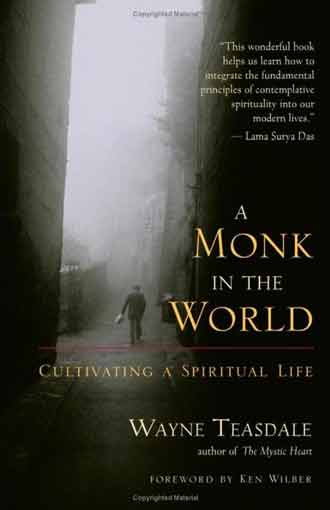

by Wayne Teasdale. Teasdale, a Catholic lay monk, combines the spiritual traditions of Christianity, Hinduism, and Buddhism to describe how to live in a large hectic city like Chicago. He talks about the homeless of the city, a recent bout with cancer, the need to make a living, support for a free Tibet, and the constraints of working within a church he loves but with which he has publicly disagreed. Teasdale looks to other monks in the world including Thomas Merton, the Dalai Lama, Bede Griffiths, Thomas Keating, and Thich Nhat Hanh to exemplify just what a life of truly integral spirituality might mean to us.
I really enjoyed this book for its practical down-to-earth recommendations on how to help humanity, like helping homeless people, while living the busy life in a city.


By Shantideva in the eight century. Translated by Padmakara Translation Group. Published by Shambhala Publications 2006. H.H. The Dalai Lama: "If I have any understanding of compassion and the practice of the bodhisattva path, it is entirely on the basis of this text that I possess it." The 8.129 stanza summarizes the Bodhisattva practice: "All the joy the world contains / Has come through wishing happiness for others. / All the misery the world contains / Has come through wanting pleasure for oneself."
"The first three chapters (The Excellence of Bodhichitta, Confession, and Taking Hold of Bodhichitta) are designed to stimulate the dawning of bodhichitta in the mind. The following three chapters (Carefulness, Vigilant Introspection, and Patience) give instructions on how to prevent the precious attitude from being dissipated, while the seventh, eight and ninth chapters (Diligence, Meditative Concentration, and Wisdom) prescribe ways in which bodhichitta may be progressively intensified. The tenth chapter is a concluding prayer of dedication."
My favourite stanzas are: 2.40: "There I'll be, prostrate on my bed / And all around, my family and friends. / But I alone shall be the one to feel / The cutting of the thread of life." 5.13: "To cover all the earth with sheets of leather - / Where could such amounts of skin be found? / But with leather soles of just my shoes / It is as though I cover all the earth!" 6.52: "Because the mind is bodiless / It cannot be destroyed by anyone. / Because of mind's attachment to the body, / This body is oppressed by pain." 8.90: "Strive at first to meditate / Upon the sameness of yourself and others. / In joy and sorrow all are equal; / Thus be guardian of all, as of yourself."
In addition to the Shantideva's 10 chapters on the Way of the Bodhisattva, there is a 24-page introduction with a concise and engaging explanation of what the practice and study of Buddhism entails, and three appendices by Kunzang Pelden – a 7-page biography of Shantideva, and special commentary on chapters 8 called Equalizing Self and Other from the Nectar of Manjushri's Speech and Exchanging Self and Other.
I enjoyed reading and thinking about this Buddhist classic. This translation reads almost like poetry. I also read No Time to Lose: A Timely Guide to the Way of the Bodhisattva by Pema Chodron, but prefer reading the text straight through without so much comment and explanation, and The Nectar of Manjushri's Speech by Kunzang Pelden and Padmakara Translation Group, but thought it was far too esoteric and complex.


Translated by Nicole Riggs. This book features only 19 of Milarepa's songs, songs translated in frank current language, songs sung to one and all, poor and rich, layman and monk. His poetry is simple, to the point, but profound. I'd liken it to the Dhammapada for its simplicity. The issues he deals with - Ego and attachment leading to unhappiness, and their antidote - meditation, emptiness, the finality of death, are probably more relevant today in our materially based culture where "we've got it all" than ever before. He especially emphasizes the homage to his Lama Marpa.
Milarepa is probably the most famous and beloved of the many Tibetan lamas. His life story is fascinating, with intrigue and murder followed by regret and final redemption, 'born again' we'd say today. I highly recommend reading a book about his life as a companion to this book, such as The Magnificent Trickster - The Story Of Milarepa by Molly MacGregor.
Here's a few brief samples of his poetry:
All phenomena, all composite things, Are as impermanent as a flash of lightning across the sky, Drops in a stream, the smoke of incense.
On the crown of my head is the kind Lama, Giving me such joy, I feel happy!, A sense of inseparability has arisen in me.
There's no nirvana to go to, There's no samsara to leave behind. Your own mind is the Buddha.
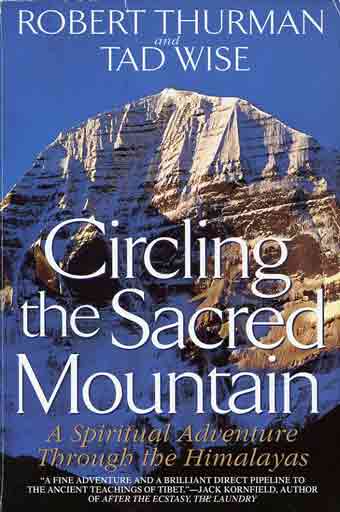
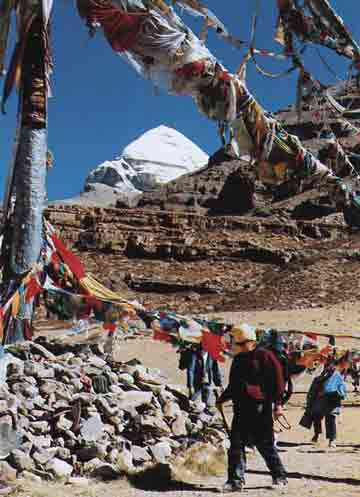

by Robert Thurman and Tad Wise. This is really three books in one. The first is a great travel guide of the 1995 journey to Mount Kailash, its history and significance to Hindus and Buddhists. In the second, Robert Thurman teaches Buddhist basics, and the Blade Wheel of Mind Reform. In the third, Tad Wise reflects on his life and develops his spirituality through Thurman's teachings and the Kailash experience.
Thurman and his former student have produced a vivid account of a spiritual pilgrimage to Kailash, a mountain sacred to Tibetan Buddhists and Hindus. Along the way, Thurman teaches the group of nine travelers the Blade Wheel of Mind Reform, a Tibetan Buddhist approach to enlightenment. The authors' descriptions of the exotic places they see, the persons they meet, and their reactions to it all are well written. Thurman relates his deep knowledge of Tibetan Buddhism to each aspect of the journey and to the external and internal experience of each traveler. A must before visiting Kailash, but a very deep wonderful Buddhist book as well.
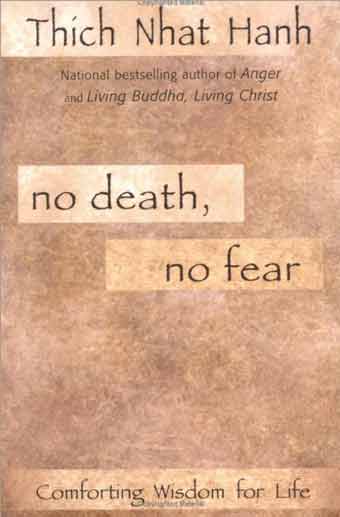

by Thich Nhat Hanh. The book offers a way to regard life that addresses the fear most people have of death. He says that our true being is not segmented by birth or death. It exists across space and time, manifesting only when causes and conditions are right. Nhat Hanh uses metaphors and simple illustrations to reveal that our human life is just a temporary manifestation, much like a wave on the ocean.
I really liked Thich Nhat Hanh's clear, pure and simple writing style, providing a view of death that teaches us about impermanence and the interbeing of all things. This is a great companion book to The Tibetan Book Of Living And Dying.

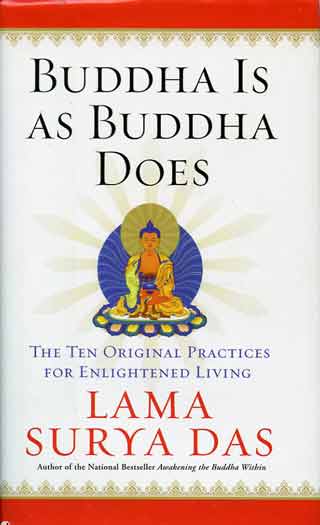

by Lama Surya Das. Surya Das simplifies the concepts of Buddhism in everyday terms for the western world. He clearly and simply explains the basics of Buddhism, including the Three Jewels of the Buddha, Dharma and Sangha, the Four Noble Truths, the Eight-Fold Path to Enlightenment, and the importance of meditation in our lives.

by Lama Surya Das. Surya Das presents the traditional Buddhist teachings on the 10 paramitas (perfections), a set of virtuous actions. He offers numerous exercises, examples, and tips to apply his teaching.
I find Surya Das's writing nicely easy to read and not too scholarly. Awakening is a very good introduction to Buddhism, providing a clear and uncluttered approach to the core elements of Buddhism. Buddha Is provides commentary on the virtues needed to be a Bodhisattva, a next step after you have absorbed some of the Buddhist basics.
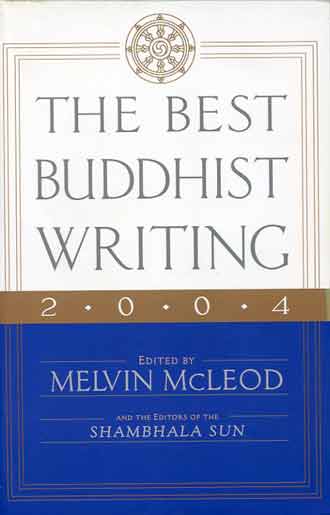
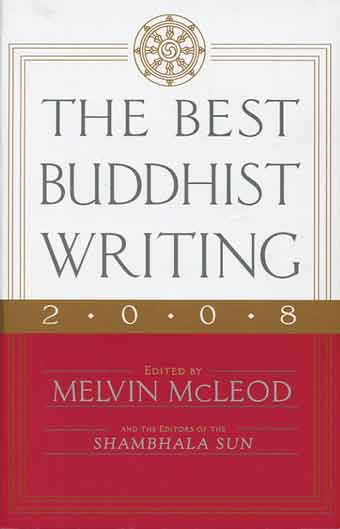

Compiled by the editors of the Shambhala Sun, North America's oldest and most widely read Buddhist magazine, the annual collection beings together the year's most notable prose and verse, inspired by the power and insight of Buddhist practice. Each anthology offers an entertaining mix of writing styles and reflect on a wide range of issues from a Buddhist point of view.
These are great books to get an overview of the different books and articles, so you can choose which to read in their full detail. In addition to the more famous authors like His Holiness The Dalai Lama, Thich Nhat Hanh, and Pema Chödrön the series introduces many other less well-known authors like Brad Warner.

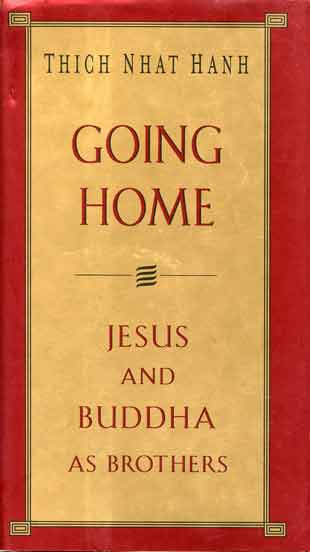

by Thich Nhat Hanh. Christ and Buddha are perhaps the two most pivotal figures in the history of humankind, leaving behind a legacy of teachings and practices that have shaped the lives of billions of people for over 2,000 years. How are the spiritual views and practices of Buddha and Christ the same, and different? Thich Nhat Hanh explores the crossroads of compassion and holiness where the two traditions meet.

by Thich Nhat Hanh. Nhat Hanh praises the differences between Christianity and Buddhism, such as rebirth versus eternal life, God versus nirvana, and so on.
After being raised as a Christian and then learning about Buddhism over the past years, this book gave me a new insight and appreciation for Christ. Hopefully some Christians will pick up this book because of the title. In addition to gaining an updated view of Christ, I think Christians will gain an insight and appreciation for Buddhism, and also for the the gentle, loving, and insightful Vietnamese monk.
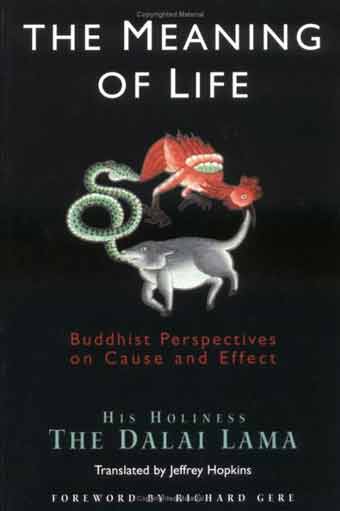

by His Holiness The Dalai Lama, translated by Jeffrey Hopkins. The Meaning of Life is a collection of lectures given in London in 1984 that uses the Buddhist painting of the Wheel Of Life to depict the levels of karmic existence and symbols of the 12 links of dependent-arising.
This is a deep, more advanced Buddhist book. I read this many years ago when I was just starting to learn Buddhism, and I found the book far too complex and confusing. I reread the book five years later, and now its message comes across in a much clearer manner. Please see my section on The Wheel of Life.
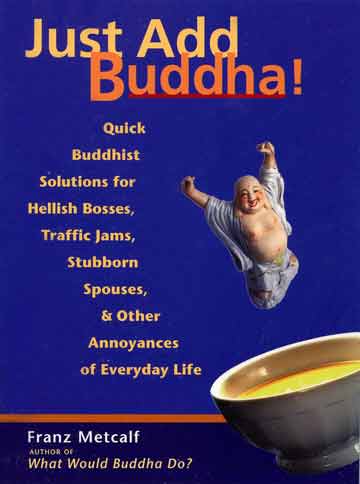





by Franz Metcalf. Following in the spirit of the popular What Would Jesus Do? books, these books takes the ancient wisdom of Buddha and applies it to contemporary questions of personal identity, relationships, and societal issues at home and at work.
For example, the question what would Buddha do when criticized? is answered in the Dhammapada, verse 76: "Look upon one who tells you your faults as giving you a hidden treasure, as a wise person who shows you the dangers of life." How do you deal with that last slice of pizza you really shouldn't have but want all the same.
If you are looking for simple and straightforward advice to common everyday problems and situations, these are very good books. Metcalf's writing style is humorous, personal, and honest. Instead of providing Buddhist teachings and letting us think through how to use them in our daily lives, I like the approach of these book in posing questions and situations and then answering them from the Buddhist perspective. I also think these book are perfect for teenagers.


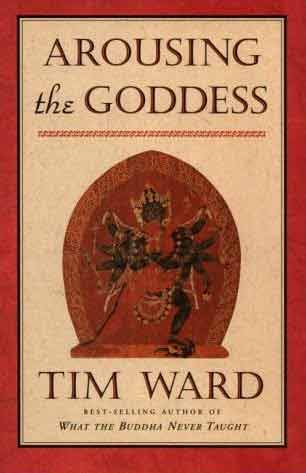

by Tim Ward. This Nirvana Trilogy describes Ward's six years wandering the Dharma trail, visiting temples and monasteries, desert ashrams, and mountain top holy places, seeking out monks and mystics. In the first book, Monasticism, Ward lives in a Thai jungle monastery, practicing the Theravada Buddhist monastic path of intense moral and ascetic discipline.

by Tim Ward. In Compassion, the second book, Ward meets the Dalai Lama and travels across India, Bangladesh, Thailand, Indonesia, China, and Tibet, where, in the midst of great suffering, the author found individuals working for the good of others with great compassion.

by Tim Ward. The third book, Passion, is about tantric sex and a passionate love affair amongst the Buddhist ruins of India.
I enjoyed reading Tim's travelogues laced with his Buddhist experiences - funny, honest and raw.